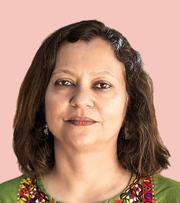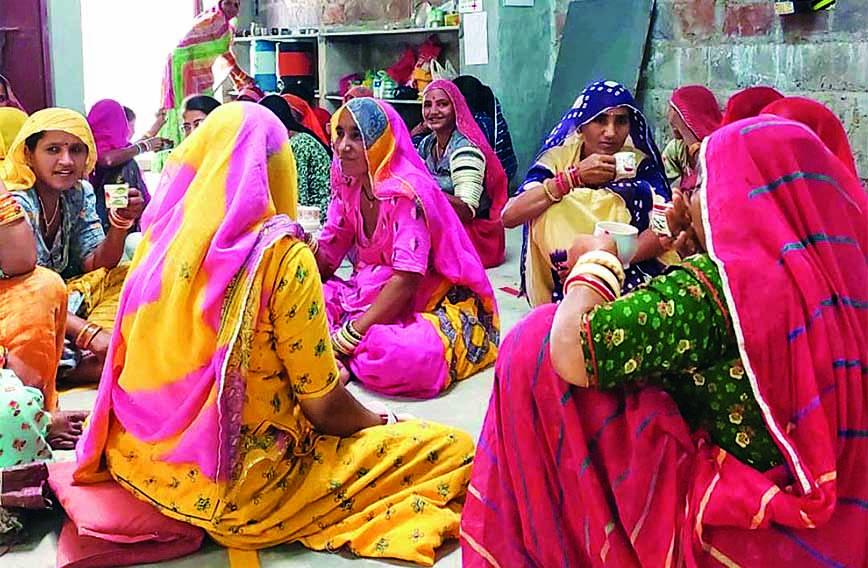
SUMITA GHOSE
THE excitement and fervour surrounding the general election in India has been palpable, with heated discussions and loud campaigns dominating the electoral landscape. However, the post-election scenario often sees promises fade into oblivion, leaving people to navigate their daily lives largely on their own. This reality is particularly stark for rural women, whose fundamental rights often extend no further than the act of casting their votes — a choice often dictated by family patriarchs.
Over my decades-long engagement with rural communities, primarily rural women, in northern and western India, I have witnessed first-hand the limitations faced by women in accessing essential social and economic rights. Despite the right to vote, their lives are marked by exclusion and marginalization. It falls upon civil society organizations to bridge this gap, shouldering the responsibility of ensuring social and economic empowerment. These organizations range from local mahila mandals, fostering community cohesion and addressing social issues, to advocacy groups opposing detrimental practices like the proliferation of liquor shops, and self-help groups striving for socio-economic development. At the national and global levels, organizations work towards social and economic justice through diverse strategic actions, mostly advocacy through campaigns and the media.
Non-profit civil society organizations and for-profit social enterprises have showcased the potential of creative and cultural industries, such as handicrafts and handlooms, as sources of economic and social empowerment. These industries, the second-largest providers of employment after agriculture in India, have proven instrumental in fostering continuous learning and practice, driving sustainable livelihoods.
Governments both at the Centre and the states have taken several steps to promote handlooms and handicrafts, by announcing several programmes and schemes, making available raw material/yarn banks, creating common facility centres for artisans, and organizing marketplaces where craftspeople can sell their products.
Yet, over the years the numbers of craftspeople have dwindled, mostly because of paucity of remunerative work due to diminishing local market demand for their products and lack of access to national and global markets. Many of them have migrated to towns and cities in search of work, some out of choice but many to just find work to eke out a living and support themselves and their families.
In this column, I delve into the notion of economic citizenship, distinct from economic empowerment. While the latter focuses on enhancing individuals’ economic circumstances through access to resources and opportunities, economic citizenship encompasses a broader concept of rights, responsibilities, and active participation in the economic fabric of society.
For economic citizenship to devolve to rural communities the follwing is needed:
Access to resources:
Ensuring rural artisans have access to raw material, equipment and appropriate technology essential for quality production. Ensuring access to training to upgrade craft skills, and managerial skills.
Safeguarding rights:
People should be assured of fair wages, safe working conditions, and intellectual property, combatting exploitation and promoting fair compensation.
Community empowerment:
Recognizing and empowering craftspeople within their communities, fostering entrepreneurship and economic self-sufficiency. It includes making people aware and appreciative of their innate knowledge and traditional skills, and using these to not only create value but also capture that part of it which is their rightful share.
To quote Dhinya Bai who was one of the first to transform her hobby of hand embroidery into a profession through the URMUL Trust and subsequently become one of the first shareholders in Rangsutra, “We were very shy and hesitant to talk about or showcase our skills but now our girls are very confident and they can delight people with their skills and enthusiasm. There is something that is beyond me or, for that matter, any one individual. All of us add something to this collective spirit of craft with an impeccable mix of aesthetics and utilitarian elements, which spread across to amplify the individual’s input. That’s how the collective is always greater and lifelong than an individual. This collective work actually brings the market to us rather than us going to the market.”
Inclusive economic development:
Governments at the Centre and state should prioritize policies that promote economic inclusion, particularly for rural collectives, and acknowledge the collective nature of craft enterprises.
Recognizing the value of cultural heritage:
Recognizing the cultural significance of crafts and supporting initiatives to preserve traditional craftsmanship and promote cultural heritage, while allowing for creative interpretation of traditional motifs and designs to suit contemporary tastes.
To quote Dhinya Bai again, “We have to keep our hearts open to embrace new trends and designs and mind open to imbibe and translate them with needle and thread onto fabric. It is this readiness that has brought beautiful handcrafted products into people’s lives and in turn empowered the women. They have built their houses, educated their kids and, most importantly, built the spirit to live and command respect. It is literally like an oasis of empowered women in this gigantic Thar desert.”
Support for Entrepreneurship:
Providing training, resources, and mentorship to facilitate the growth of craft businesses and navigate regulatory frameworks.
Equitable access to opportunities:
Ensuring craftspeople have equitable access to markets and credit.
Governments and community-owned organizations must create an enabling environment for craftspeople to thrive economically. Procurement policies, such as sourcing textiles directly from handloom societies for government entities, can significantly boost the sector.
Additionally, civil society, especially the urban middle class, bears a responsibility to make informed consumption choices, questioning the origins and impacts of products they purchase.
In essence, economic citizenship for craftspeople entails ensuring equitable rights, opportunities, and protections while preserving cultural heritage. It has to be a collective effort involving governments, communities, civil society, and conscientious consumers, aimed at fostering sustainable livelihoods and social justice.
To quote Mahatma Gandhi: There is enough in this world for everyone’s needs, but not for anybody’s greed.
Sumita Ghose is founder-director of Rangsutra Crafts
Comments
-

Vaibhav Bhamoriya - June 21, 2024, 12:51 p.m.
So well said and yes, the collectives are the only source of hope and movement ahead for many rural women. And maybe in some areas for all the women there.
-

Elizabeth - June 6, 2024, 2:52 a.m.
Beautifully written !! You've also not just talked about, but also lived life of commitment to these women. More power to you and these strong, talented women.




